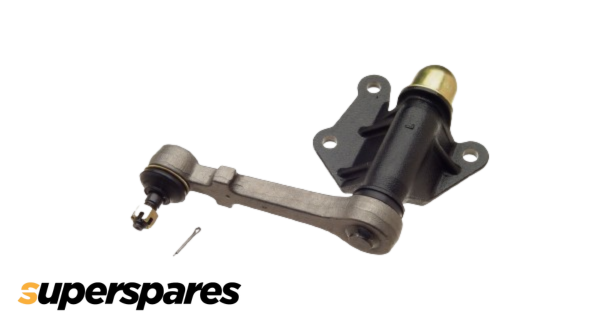What You Need to Know About an Idler Arm
Author: superspares

What is an idler arm?
The idler arm assembly provides pivoting support for the steering linkage. It is comprised of a rod that pivots on a bracket bolted to the frame of the vehicle on one end and supports a ball socket on the other end. Generally, an idler arm is attached between the opposite side of the center link from the pitman arm and the vehicle's frame to hold the center link at the proper height so it can accurately relay the pitman arm's movement. Idler arms are generally more vulnerable to wear than pitman arms because of the pivot function built into them.
How long do idler arms last and what causes them to go bad?
Idler arms are durable and with the proper maintenance and care could last for the lifetime of your vehicle. However, depending on individual driving habits, road conditions, lack of lubrication, maintenance and other factors, the idler arms can wear more quickly. They can also become damaged in an accident or left loose after service which can contribute to the need for replacement idler arms.
What are the warning signs of a bad idler arm? Poor Steering
If you notice your steering wheel feels loose or has extra play before the tires respond, this may be a sign of an issue with your idler arm or pitman arm. If these arms fail completely, you will lose all steering in your vehicle. These types of issues should be dealt with immediately as the steering components are a major safety consideration.
How to Replace a Faulty Idler Arm?
Your steering system's idler arm works the hardest when it comes to twisting and turning your car. So it's only natural for it to become worn over time. Don't let a bad idler arm get in the way of your driving. Replace it immediately when your steering system isn't as responsive as it used to. You don't have to be an expert mechanic to change this particular part. All you need are a few tools and steady hands.
Tools you'll need:
- Hydraulic lift/ jack and jack stand
- Idler arm replacement
- Grease gun and grease
- Wrench
- 1/2-inch drive ratchet and socket set
Step 1:
Since you idler arm is part of your steering system, you should start with your car's front tires. Loosen the lug nuts on your passenger side's tire before lifting your car.
Step 2:
Using a hydraulic lift, gently raise your car off the ground. If you're using a jack to raise your car, make sure to support it using jack stands.
Step 3:
Completely remove the lug nuts to pull out your passenger side's front tire.
Step 4:
With the front tire out of the way, you should be able to see your idler arm. Your idler arm is the S-shaped part that connects the frame and the center link bar of your steering system. Once you've located the idler arm, remove the cotter pin from the arm using a deep socket.
Step 5:
With your ratchet and socket, remove the castle nut. This part should be found in the ball stud; it is connected to the center link.
Step 6:
Now that your idler arm is free of the castle nut and cotter pin, you can now remove the idler arm by pulling out the bolts holding it.
Step 7:
Install your new idler arm in the same position and orientation as your old one. Secure it with the nuts and bolts carefully, making sure not to push the bolts into the frame. Reassemble the cotter pin and castle nut the same way as instructed in steps 5 and 6.
Step 8:
Using a grease gun, coat the idler arm with grease to ensure a better fit. Put your front tire back in place and tighten the lug bolts.
Step 9:
To test drive your new idler arm, lower your vehicle and take it out for a spin.
How much are idler arms?
Replacing idler arms varies depending on the vehicle and amount of labor required. Some vehicles may need to replace the idler arm and pitman arm together. Replacement parts may not be too expensive, but oftentimes the steering components take a fair amount of time to assemble and test. Typically, an alignment is also required when adjusting or replacing idler arms.







